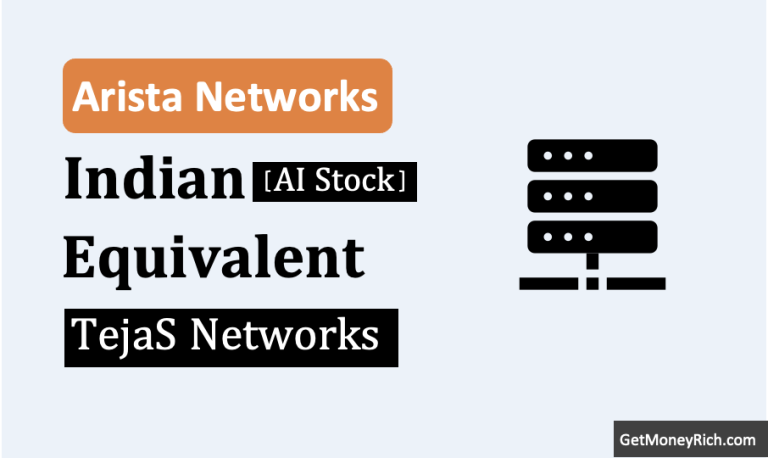If you’ve been keeping an eye on the stock market lately, you might’ve noticed something troubling: Target’s stock has taken a pretty big hit. It dropped from $177.21 in March 2024 to $124.24 by February 2025. That’s a whopping 29.89% decline in less than a year. I saw people worried about their holdings in Target, and I totally get why. Target has been a go-to for so many of us, whether it’s for grabbing some cute home decor, stocking up on snacks, or snagging a new outfit. So, what’s going on with this retail giant?
So I thought, why not dig into the numbers of the company to find out if the answer is there. We’ll also see the challenges, and the bigger picture to figure out why Target’s stock is in a slump.
Grab a coffee, and let’s chat about it.
A Quick Look at Target’s Stock Journey
Before we dive into the nitty-gritty, let’s take a step back and look at Target’s stock price over the past few years. It’s been a wild ride:
- January 2020: $124.76—solid, pre-pandemic vibes.
- March 2020: $94.74—down 20%, thanks to the early chaos of COVID-19.
- July 2021: $261.03—up a jaw-dropping 182% from March 2020, as Target crushed it during the pandemic with online sales and stimulus-fueled shopping.
- October 2023: $105.01—yikes, a 59.77% drop from that 2021 peak, as inflation and rate hikes hit hard.
- March 2024: $177.21—a nice 68.76% recovery from late 2023.
- February 2025: $124.24—down 29.89% again, and here we are.
This rollercoaster tells a story of a company that soared during the pandemic but has struggled to keep that momentum.
The recent drop from March 2024 to February 2025 is what we’re focusing on today, and I’ve got a ton of financial data to unpack (income statements, balance sheets, cash flows, and more).
Let’s declutter the data and see what’s driving this decline.
1. Profits Are Taking a Hit—And Investors Aren’t Happy
First things first, let’s talk about Target’s earnings. If there’s one thing the stock market hates, it’s when a company’s profits start shrinking. I looked at Target’s income statements for the last five quarters (up to November 2024) and the last five years (2020–2024), and there’s a clear trend: profitability is under pressure.
The Latest Quarterly Numbers Tell a Tough Story
| Description | Q4 2023 | Q1 2024 | Q2 2024 | Q3 2024 | Q4 2024 |
|---|---|---|---|---|---|
| EPS | 2.1 | 2.98 | 2.03 | 2.57 | 1.85 |
In Q3 2024 (ending November 2024), Target’s earnings per share (EPS) dropped to $1.85, down 28% from $2.57 in the previous quarter. That’s a big miss, analysts were expecting around $2.30.
| Description (in USD Mn) | Q4 2023 | Q1 2024 | Q2 2024 | Q3 2024 | Q4 2024 |
|---|---|---|---|---|---|
| Net Income | 971 | 1382 | 942 | 1192 | 854 |
| Operating Income | 1406 | 1896 | 1325 | 1691 | 1197 |
Net income also fell 28.4% from $1,192 million in Q2 to $854 million in Q3, and operating income took a 29.2% hit, dropping from $1,691 million to $1,197 million. Ouch.
| Description | Q4 2023 | Q1 2024 | Q2 2024 | Q3 2024 | Q4 2024 |
|---|---|---|---|---|---|
| Gross Profit Margin % | 28.54% | 26.68% | 28.87% | 30.07% | 28.41% |
What’s behind this? Well, Target’s gross profit margin, the percentage of revenue left after paying for the goods it sells, slipped from 30.07% in Q2 to 28.41% in Q3. That might not sound like a lot, but for a retailer, every percentage point matters. It looks like Target had to discount more to attract shoppers, or maybe the cost of goods went up due to supply chain hiccups (more on that later).
| Description | 2023 | 2024 | 2024 | 2024 | 2024 |
|---|---|---|---|---|---|
| EBIT Margin % | 5.54% | 5.94% | 5.40% | 6.64% | 4.66% |
| Net Income Margin % | 3.82% | 4.33% | 3.84% | 4.68% | 3.33% |
Either way, the EBIT margin (a measure of operating profitability) shrank from 6.64% to 4.66%, and the net income margin fell from 4.68% to 3.33%.
These shrinking margins are a red flag for investors, and it’s no surprise the stock started sliding after these results came out.
Annual Trends Show Volatility
Zooming out to the annual numbers, we see a similar pattern of ups and downs.
| Description | 2020 | 2021 | 2022 | 2023 | 2024 |
|---|---|---|---|---|---|
| Net Income to Company | 3281 | 4368 | 6946 | 2780 | 4138 |
| Net Income Margin % | 4.20% | 4.67% | 6.55% | 2.55% | 3.85% |
In 2022, Target was killing it, net income hit $6,946 million with a net margin of 6.55%. But by 2023, that plummeted to $2,780 million (net margin 2.55%) as inflation and rising interest rates made shoppers more cautious. There was a recovery in 2024, with net income climbing back to $4,138 million (net margin 3.85%), but the quarterly data shows that momentum didn’t last into late 2024.
| Description | 2020 | 2021 | 2022 | 2023 | 2024 |
|---|---|---|---|---|---|
| Total Revenues (in USD Mn) | 78112 | 93561 | 106005 | 109120 | 107412 |
Revenue growth has also stalled. Target’s annual revenue grew from $78,112 million in 2020 to $109,120 million in 2023, but it dipped to $107,412 million in 2024, a 1.6% decline. In the latest quarter (Q3 2024), revenue only grew 1.06% year-over-year to $25,668 million. For a company like Target, which thrives on getting more people through the doors (or onto its website), this sluggish growth is a problem.
Why This Matters? Investors love growth and stable profits. When Target’s earnings tanked in Q3 2024 and revenue growth slowed, the market reacted. This earnings miss likely kicked off the stock’s decline from its March 2024 high, as people started to worry about whether Target can get its profits back on track.
2. Shoppers Are Tightening Their Belts, and Target Feels It
Let’s talk about the elephant in the room: Target’s business model.
Unlike its rival Walmart, which gets nearly 60% of its sales from groceries, Target relies heavily on discretionary items, like clothes, home decor, and electronics. They make up over half its sales. Only about 25% of its revenue comes from essentials like food. That’s great when people are splurging, like they were in 2021, but it’s a problem when wallets get tight.
Since 2022, inflation and high interest rates have been squeezing middle-income families. These are Target’s core customers. I’ve felt it myself, when prices for gas and groceries go up, I’m less likely to buy that cute throw pillow or new pair of jeans. Instead, I’m focusing on the basics.
The quarterly data backs this up: Target’s CEO, Brian Cornell, mentioned in late 2024 that sales of high-margin discretionary items were weak, and the company had to lean on heavy discounts to bring shoppers in. That’s why we’re seeing those shrinking margins I mentioned earlier.
Why This Matters? With discretionary spending under pressure, Target’s revenue and profits are taking a hit. The stock market doesn’t like uncertainty, and right now, investors are worried that Target’s reliance on non-essential items. This is what makes it more vulnerable than competitors like Walmart, whose stock, by the way, was up 71% in 2024 while Target’s fell 2.1%.
3. Operational Hiccups Are Making Things Worse
Target isn’t just dealing with picky shoppers, it’s also been tripping over its own feet. In Q3 2024, the company faced a few operational challenges that hurt its bottom line:
- Shipping Delays: A U.S. port strike in October 2024 caused delays in getting products onto shelves. For a retailer like Target, timing is everything—especially heading into the holiday season. Those delays likely meant lost sales and higher costs, which we see in the lower margins.
- Discounting to Compete: To win back budget-conscious shoppers, Target ramped up promotions. That’s a double-edged sword: it might bring in more customers, but it eats into profits. We saw this in the gross margin drop from Q2 to Q3 2024.
- Higher Costs: Labor costs, shipping expenses, and investments in things like store remodels or its supply chain are adding up. Target has been pouring money into improving its digital game (online sales were up 11% in Q3 2024, which is awesome!), but those investments come at a cost.
Why This Matters? These operational issues are dragging down profits at a time when Target can’t afford to look weak. Investors are starting to wonder if the company can execute smoothly in a tough environment, and that doubt is weighing on the stock.
4. Target’s Balance Sheet Is Raising Eyebrows
Now let’s peek at Target’s balance sheet, it’s not all bad, but there are a few things that might be making investors nervous.
| Description (in USD Mn) | 2020 | 2021 | 2022 | 2023 | 2024 |
|---|---|---|---|---|---|
| Total Debt | 13,974 | 15,109 | 16,467 | 19,154 | 19,769 |
| D/E | 1.18 | 1.05 | 1.28 | 1.71 | 1.47 |
| Cash & Cash Equivalents | 2,577 | 8,511 | 5,911 | 2,229 | 3,805 |
| Current Ratio | 0.89 | 1.03 | 0.99 | 0.92 | 0.91 |
| Free Cash Flow | 3,402.13 | 6,570.38 | 3,888.63 | -2,647.75 | 2,332.75 |
- More Debt, Less Cash: Target’s total debt grew from $13,974 million in 2020 to $19,769 million in 2024, a 41% increase. Meanwhile, its debt-to-equity ratio climbed from 1.18 to 1.47 over the same period. That’s not crazy high, but in a world where interest rates are still elevated (we’re talking 2024–2025 here), paying more to service that debt cuts into profits.
- Liquidity Concerns: The current ratio (current assets divided by current liabilities) has dropped slightly from 0.99 in 2022 to 0.91 in 2024. That means Target has less of a cushion to cover short-term obligations, which is risky if sales keep slowing.
- Free Cash Flow Is Shrinking: Levered free cash flow, a measure of how much cash Target has left after paying for operations and investments, plummeted from $3,888 million in 2022 to $2,332 million in 2024. That’s a 40% drop. In between (in Year 2023, FCF even went to negative). It looks like Target is spending a lot on things like new stores or tech upgrades, but it’s leaving less cash on hand to weather tough times.
Does it matter? Yes, the market doesn’t like companies that look financially stretched. With more debt, less liquidity, and shrinking free cash flow, Target seems riskier to investors right now. That’s definitely contributing to the stock’s decline.
5. The Market Isn’t Feeling Confident, Valuation Ratios Show It
Let’s talk about how the market is valuing Target. I pulled some valuation ratios like trailing P/E, forward P/E, and EV/EBITDA, and they paint a picture of declining confidence.
| Description | 10/31/2023 | 1/31/2024 | 4/30/2024 | 7/31/2024 | 10/31/2024 | Current |
|---|---|---|---|---|---|---|
| P/E (TTM) | 15.2 | 17.72 | 18.01 | 16.86 | 15.5 | 13.17 |
| P/E (Forward) | 12.32 | 15.2 | 17.3 | 16.18 | 14.37 | 13.07 |
| PEG | 0.78 | 1.04 | 2.48 | 2.31 | 1.76 | 1.72 |
| Market Cap | 51.15B | 64.21B | 74.47B | 69.59B | 69.12B | 56.93B |
- Trailing P/E: This dropped from 15.2 in October 2023 to 13.17 by in 2025. That means investors are willing to pay less for each dollar of Target’s earnings, likely because those earnings are shrinking (like we saw in Q3 2024).
- Forward P/E: The forward P/E increases from 12.32 to 13.07 over the same period. That’s a sign the market expects Target’s growth to improve in the future.
- PEG Ratio: The PEG ratio (which factors in expected growth) increased from 0.78 (2023) to 1.72 (2025). It is suggesting the stock might be overvalued, but it also reflects higher growth expectations.
- Market Cap: Target’s market cap fell from $74.47 billion in mid-2024 to $56.93 billion in 2025, mirroring the stock price drop.
These valuation metrics show that investors are losing faith in Target’s ability to grow. The stock’s decline from $177.21 to $124.24 isn’t just about bad earnings, it’s about the market rethinking what Target is worth.
6. Competition and External Drama Aren’t Helping
Target isn’t operating in a vacuum. It’s up against fierce competition, and a few external controversies are adding to its woes.
- Walmart Is Winning: Walmart, with its focus on groceries and lower prices (about 8.6% cheaper than Target, according to a 2024 RBC study), has been stealing the show. While Target’s stock struggled, Walmart’s soared 71% in 2024. That’s a huge gap, and it shows how Target’s discretionary-heavy model is a disadvantage right now.
- Cultural Backlash: In January 2025, Target announced it was phasing out its Diversity, Equity, and Inclusion (DEI) programs. Some customers threatened boycotts, and while it’s hard to say how much this hurt sales, it definitely didn’t help Target’s image. Plus, in February 2025, lawsuits in Florida claimed Target misled investors about risks tied to its 2023 Pride campaign (which led to a $15.7 billion market value drop back then). Drama like this can spook investors, even if the financial impact isn’t immediate.
Between losing ground to Walmart and dealing with PR headaches, Target is fighting battles on multiple fronts. That makes it harder to win back investor confidence and stop the stock’s slide.
7. Is Target’s Stock Undervalued?
Okay, we’ve talked a lot about why Target’s stock is falling, but here’s the million-dollar question: is it a good deal at $124.24, or should it be even lower?
To figure that out, I did a discounted cash flow (DCF) analysis to estimate Target’s intrinsic value per share.
Let’s break it down in a way that’s not too math-heavy, I promise it’ll be fun.
| Description | 2020 | 2021 | 2022 | 2023 | 2024 |
|---|---|---|---|---|---|
| Free Cash Flow (in USD Mn) | 3,402.13 | 6,570.38 | 3,888.63 | -2,647.75 | 2,332.75 |
Assumption:
- I’ll assume FCF grows at 5% per year for the next five years, that’s a modest growth rate, given Target’s recent challenges but also its potential to recover as the economy stabilizes.
- I’ll use a terminal growth rate of 2%, which is pretty standard for a mature company like Target in a developed market.
- To discount the cash flows back to today, I need a discount rate, also known as the weighted average cost of capital (WACC). Based on Target’s debt-to-equity ratio (1.05 in 2024) and the current high-rate environment, I’m going with a WACC of 8%. It’s a reasonable estimate for a retailer like Target, balancing its cost of debt and equity.
| Year | FCF (Mn USD) | Present Value (Mn USD) |
|---|---|---|
| 2025 | $2,446.24 | $2,265.03 |
| 2026 | $2,568.55 | $2,201.83 |
| 2027 | $2,696.98 | $2,140.26 |
| 2028 | $2,831.83 | $2,080.31 |
| 2029 | $2,973.42 | $2,022.05 |
| Terminal Value | $50,650.12 | $31,592.58 |
| Total PV | $42,204.06 | |
| Less: Net Debt | $10,664.00 | |
| Equity Value | $31,540.06 | |
| Shares Outstanding | 458.21 million | |
| Intrinsic Value per Share | $68.83 |
So, what does this mean? At $68.83, Target’s intrinsic value is a lot lower than its current stock price of $124.24. That’s a bit of a shocker, it suggests the stock might be overvalued by about 80%.
Now, I’ll be honest: this DCF is based on some assumptions, and if I tweak the growth rates or WACC, the number could change. But even with that in mind, this gap is pretty big. It tells me the market might still be pricing in some optimism about Target’s future.
Why Target’s Stock Is Falling
So, let’s tie it all together. Target’s stock has fallen 29.89% from March 2024 to February 2025 because of a perfect storm of challenges:
- Shrinking Profits: The Q3 2024 earnings miss—EPS down 28%, margins shrinking—sent a clear signal that Target is struggling to stay profitable in a tough environment.
- Weak Consumer Spending: Inflation and high interest rates are hitting Target’s middle-income customers hard, and they’re not buying as many discretionary items.
- Operational Mishaps: Shipping delays, heavy discounting, and rising costs are eating into Target’s bottom line.
- Financial Strain: More debt, less liquidity, and a huge drop in free cash flow make Target look riskier to investors.
- Market Doubts: Valuation ratios like P/E and PEG are down, showing that the market is losing confidence in Target’s growth story.
- Competition and Controversy: Walmart’s outperformance and Target’s cultural missteps are adding extra pressure.
Is There Hope for Target?
I know this all sounds pretty grim, but I don’t think Target is down for the count.
There are some bright spots in the data, like the 11% jump in digital sales in Q3 2024 and steady foot traffic growth.
Target has also been consistent with its dividends (around $1.10–$1.12 per share recently), which is great for income investors. Historically, this company has shown it can bounce back, just look at that 182% stock price surge from 2020 to 2021,
But to get back on track, Target needs to tackle a few things, cut costs without sacrificing quality. They must also find ways to boost discretionary sales (maybe lean harder into trending categories like wellness or affordable luxe), and keep investing in its online and same-day delivery game.
If it can weather this economic storm and prove it’s still a retail leader, I think the stock could rebound.
What Can You Do About It?
If you’re an investor watching Target’s stock, here are a few practical takeaways:
- Keep an Eye on Earnings: Target’s next earnings report will be crucial. If profits and margins start to recover, the stock could see a bump.
- Watch Consumer Trends: If inflation cools and interest rates drop in 2025, shoppers might start splurging again, that would be a big win for Target.
- Compare to Peers: Check how Walmart and other retailers are doing. If Target starts closing the gap, it might be a sign things are turning around.
- Look for Value: With a lower P/E and PEG ratio, some might see Target as a buying opportunity, but only if you believe in its long-term recovery.
For shoppers like me, let’s keep supporting Target where we can. I’ll be heading there this weekend for some holiday decor, those deals are calling my name.
But I’ll also be watching to see if they can get their groove back.
Conclusion
Target’s stock falling isn’t a mystery, it’s the result of weaker profits, cautious consumers, operational hiccups, financial pressures, and a tough competitive landscape.
The data tells the story loud and clear. Target is struggling to adapt to a world where middle-income shoppers are stretched thin and rivals like Walmart are better positioned for the moment.
And with an intrinsic value of $68.83, well below the current price of $124.24, it looks like the stock might have further to fall before it becomes a bargain. B
ut I’m still rooting for Target to turn things around.
What do you think, will they bounce back, or are these challenges too big to overcome? Drop your thoughts in the comments, I’d love to hear what you’re seeing out there!
Have a happy investing.





